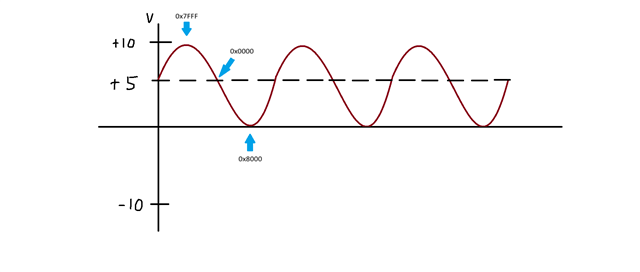Other Parts Discussed in Thread: DAC8775EVM, ADS8588S, ADS8584S
Tool/software:
Hello,
I am using the ADS8588SEVM with my MCU via SPI. I have tried playing around with the EVM using the PHI and can acquire the sine wave I wish to see on the GUI. What I am confused by is when using an oscilloscope to capture the signals I need to recreate with my MCU, I get the attached image.  A
A
Yellow: SCLK
Blue: CONVSTA
Purple: DOUTA
I am trying to capture an analog sine wave with range 0-10V via the DAC8775EVM. I can confirm that the DAC produces the wave and is fully functioning. For the ADS settings, I have set:
Range: -10V to 10V
Serial Interface (with J3 shunted)
Oversampling x0
Internal Reference.
I also have an external AVDD = DVDD = 5V.
Questions.
1) How do I understand what is shown in the oscilloscope? I know that there is something about a 2's-complement but I do not fully understand it even after I know I need to convert the DATA into unsigned.
2) What exactly do I need to toggle to successfully replicate the capture in the GUI? From my understanding, I need to toggle CONVSTA, set /CS to low, receive the input, set /CS to high and repeat for continuous capture?
I am quite new to using this device and would appreciate any help. Thanks in advance.











